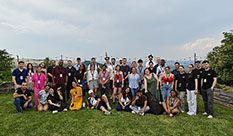More:
News & Stories
MEMORY_ALMOST_FULL
Featuring: Eitan Bartal, Yonatan Ben-Simhon and Mattan Tenne, Eyal Datz, Oded Ezer, Gilad Friedman, Rony Ginosar, Eyal Yehowa Gruss, Chenn Hearthstone, Yuval Keshet, Ofir Liberman, Yoav Ruda, Anat Saacks, Dafna Sartiel, Haya Sheffer, Naama Steinbock, Shaul Tzemach
Curator: Adi Karelitz
Vitrina Gallery Curator: Tamar Lev On
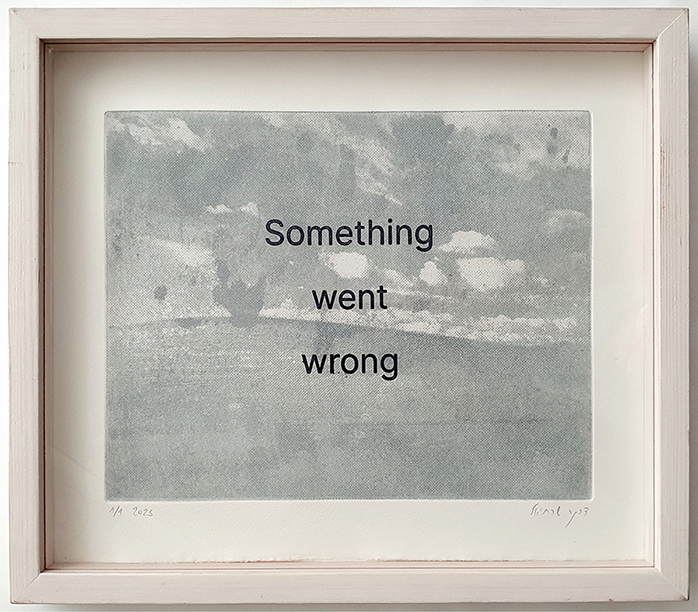
Three prints documenting Liberman’s shamanic journeys during his initiation process into the Toltec (pre-Columbian) tradition. The fragments of these journeys were captured using automatic writing, which Liberman then converted into prompts, digitally reducing them using a dedicated software he created for this project.
The final prints were printed using a pen plotter. Thus, each journey passed through several steps – from the shamanic experience through algorithmic processing to the eventual return to concrete reality. Lieberman is an educator, designer, and artist who works in the intersection of art, research, and technology. His work combines UX design, interactive systems development, and artistic exploration of coding languages and algorithms.

Deep Hate Machine was originally introduced in 2013 as a machine with low self-esteem that scours Twitter, detecting and printing out expressions of anger directed at machines.
By 2025, the deep hate machine has evolved and expanded its operations to include generative artificial intelligence, and the texts it prints out are sentiments on the only thing that interests it: The machine problem.
Yonatan Ben-Simhon and Mattan Tenne are AI professionals and artists. The two met at AOL, as algorithm engineers specialized in machine learning and natural language analysis, where they discovered their love of language models. Using machines and AI as their medium of choice, they expose the flaws in the machine and in the human estimation of its abilities.

Shaul Tzemach creates a generative environment of visual noise based on the random motion of particles (known as Brownian motion).
The viewer’s movements merge with the work as a fluid algorithmic convergence, while the structure of primary forms starts to take shape and crystallize out of the disorder of the universe. Starting out as a visual artist, Tzemach works with new media, kinetic art, interactive art, real-time generative art, video mapping, and 3D projections. His interdisciplinary works combine different methods in an exploration of themes like becoming, transformation, duration, and the growth of forms.
An ongoing series of etchings created in different stages since 2011. Each print features an error message etched into the digital memory of that period.
Dafna Sartiel’s artistic practice includes printmaking, engraving, photography, mosaic, and sculpture. She has been working in design for many years, and since 2005 she has been making art, specializing in printmaking and engraving. Her work often explores the tension between the medium to the image and the meaning it holds.

A speculatively bioengineered engineered organism developed through the integration of advanced synthetic biology and AI algorithms. The “animal/organism” was specifically designed for the efficient and sustainable production of high-quality protein for human consumption.
Eitan Bartal is an artist, designer, and senior lecturer at HIT Holon Institute of Technology. His works explore the urban space as an arena where sociopolitical power dynamics are reenacted while critically examining formative mass culture imagery and symbols.
The public space is inundated with images, with billboards and ads posted around construction sites and featured on passing trucks. Sometimes these look like glimpses of other realities within the one in which we live, and it seems that with the right framing, multiple realities can be flattened and fused together.
Yuval Keshet is a creative and visual artist who combines social and cultural research and practice in the broad field of visual and material culture.
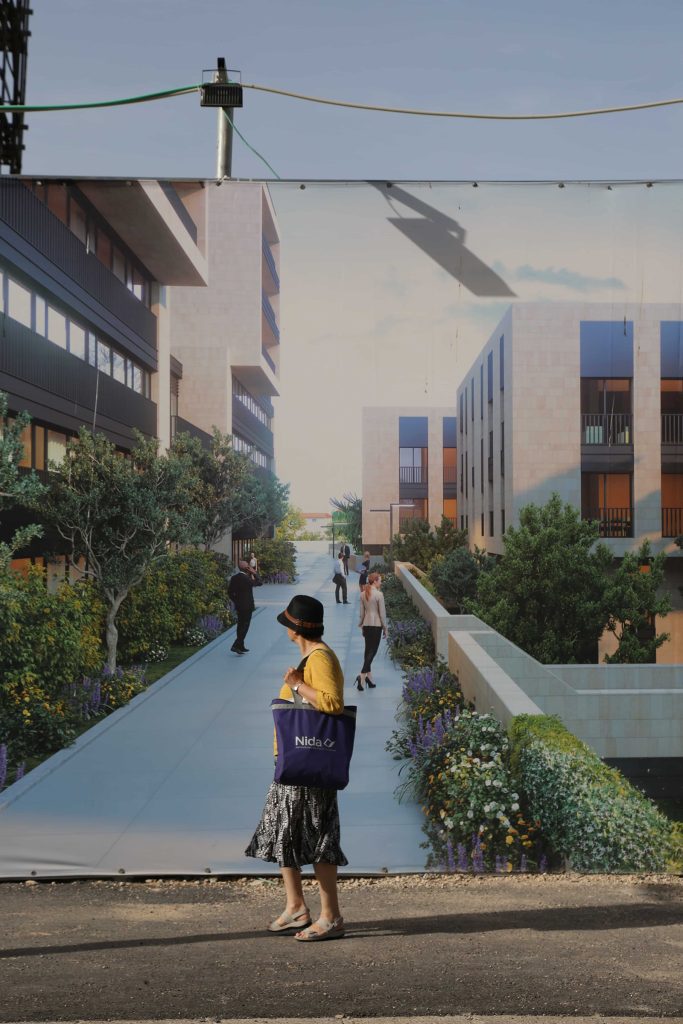
The work offers a speculative interpretation of “artifacts” from our time in the future. Friedman presents a 3D artifact that was printed from a digital file. After being subjected to a corruption process, code extracted from the file was used for programming a unique pattern. Friedman used this software to plot out the printed pattern of the rug displayed next to the object, as its corrupt offspring.
Gilad Friedman is a multidisciplinary artist who works with crafts and traditional paintings as well as classic industrial design and CAD software. He employs technology as a design and experience generating tool, experimenting with parametric and generative design.

Ruda considers the double-slit experiment – which tests whether radiation behaves like a wave or like particles – to be the scientific discovery that fundamentally undermines our perception of reality more than any other experiment. His audiovisual collage, based on an original poetic text, captures the uneasy feeling one gets after realizing the full implications of this experiment.
Ruda works in a range of mediums, including video, film, photography, and digital art. His photography and video works have been exhibited in Israel and abroad, he has created original videos for live concerts of top Israeli musicians, and he has recently made a series of poetry slam-based videos.
Ordinarily, we do not stop to dwell on errors. But sometimes, they hold a special beauty. The work presents a compilation of errors, or as they are commonly called: “bugs.” The only difference between these photos taken with a smartphone camera and a regular photo is a bug in the camera’s code.
This is not a psychedelic painting or design; it is also not the result of deliberate composition or color choice. This is a spontaneous photograph that exposes the beauty of an error. Rony Ginosar is a designer, algorithm researcher, and lecturer at HIT Holon Institute of Technology. She studied visual communication and computer science, with a focus on computer vision (CV), particularly typography and the intersections of design and coding in both practical and research aspects. Her work explores Visual Algorithms, with a specialization in Hebrew typography.

Gruss inadvertently developed an animation technique based on an image-to-image generator. Due to a glitchy feedback loop, the system brightened the images fed to it and the figures in them, and the model seemed to interpret the images as drawings on paper. This generated an image that evolves semantically and, with a little guidance, lends itself to storytelling.
Eyal Yehowa Gruss is an artist, programmer, poet, algorithm researcher, and computational creativity lecturer at HIT Holon Institute of Technology. He creates interactive installations, multimedia shows, constrained and algorithmic poetry, and code art.
In 2023, an AI-powered robot in the likeness of Nicolaus Copernicus was installed at Warsaw’s Copernicus Science Centre. Copernicus’s facial expressions, the pauses in his speech pattern, and his pensive gaze were all a part of an aesthetic designed to give the robot a human semblance. The video documents the robot’s interactions with museum visitors and how the disruption is aimed at removing barriers between the human and the artificial.
Eyal Datz is a documentary filmmaker whose projects have been featured by major television channels and screened at international festivals. He recently created the web series “Press Play” for Kan 11, exploring the interface between gaming, culture, and advanced technologies such as VR and AR, while examining their impact on contemporary society and culture.
A realistic photo of a bird, found dead at the entrance to the artist’s home, stands at the heart of a conversation with an AI-powered language model (LLM), which operates as an emotion- simulating entity that is asked to respond to casual loss. The work underscores the emotional gap between humans and machines: between direct documentation of death and an algorithm that offers what it identifies as emotion, solace, interpretation, and memory.
Saaks is a graphic designer and visual artist. She is a lecturer at HIT Holon Institute of Technology, the owner of A designstudio for design and branding, as well as a social activist and volunteer at a mental health organization.
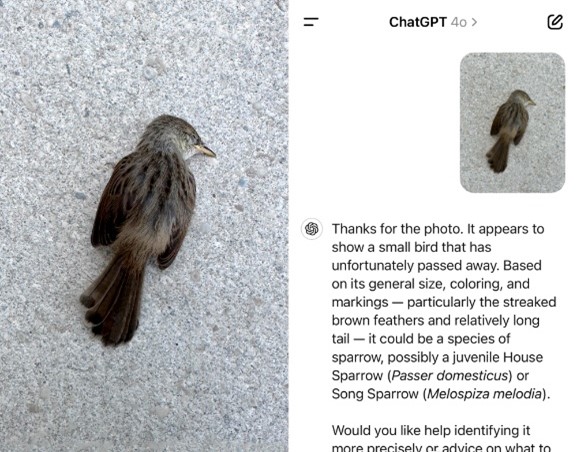
The project examines the teapot as a cultural, formal, and functional object by taking it apart and compiling an archive of handmade ceramic variations. In her exploration of craft, Steinbock embraces the labor-intensive truth of the physical process set against a fast-paced and fickle digital world.
* The project started as part of the Benyamini Contemporary Ceramics Center residency program. Naama Steinbock is a product designer, partner at Reddish Studio, and professor in the Department of Industrial Design at HIT Holon Institute of Technology..
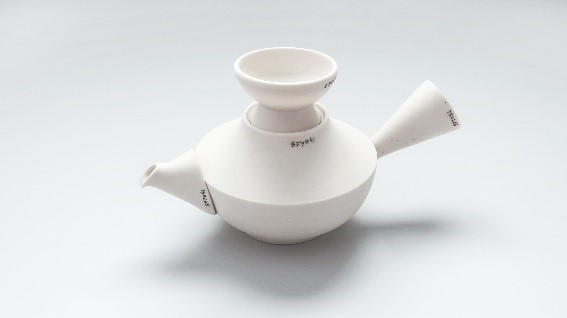
Imagine a future world with robots that develop sophisticated emotions and humans upload their consciousness to the digital cloud. What would the concept of “human rights” look like in such a world? The work presents a new bill of rights, created after a deep conversation with ChatGPT about the new complexities of this hypothetical world. The conversation led to the formulation of five basic rights that apply to anyone who exists in any shape or form of life – be it human or mechanical.
Chenn Hearthstone is a visual artist who started working with digital tools recently, after being diagnosed with a genetic syndrome that affects her ability to rely predominantly on her hands.
A collection of photos from CCTV footage taken in a mountainous rural area is presented alongside a large-scale drawing based on the same images. The extraction of the images from their original context and the unexpected juxtaposition of CCTV and AI-based image recognition with wild nature create an unexpected glitch of a satirical, surprising, and critical narrative. The research was supported by the UKRI – UK Research and Innovation.
Sheffer is a doctoral researcher who focuses on advanced technologies for personal use, the power they hold, and their impact on the individual, the perception of the self, and society.

The work presents a visual glitch of a cinematic scene that left an indelible mark on cultural consciousness and the collective unconscious. The Preloader symbol, a universal icon of loading and buffering, is embedded in the image at the exact moment it is expected to be revealed, transforming the delay into a political practice. Through a simple editing action, the work thwarts not only the viewer’s expectation, but also the cultural structure of visual memory.
Ezer is a typographer, type designer, conceptual artist, and lecturer at HIT Holon Institute of Technology. He examines the role visual culture plays in technology and human communication and has presented speculative projects and artworks at venues like MoMA in New York and the V&A in London.
For exhibition text in other languages:
- News & Events
International Week of Interdisciplinary Studies and Academic Collaborations in Crete
A substantial delegation of 16 students and four faculty members from HIT Holon Institute of Technology participated in week-long international activities and events at HMU-Hellenic Mediterranean University in Crete. ...


 Additional programs
Additional programs
